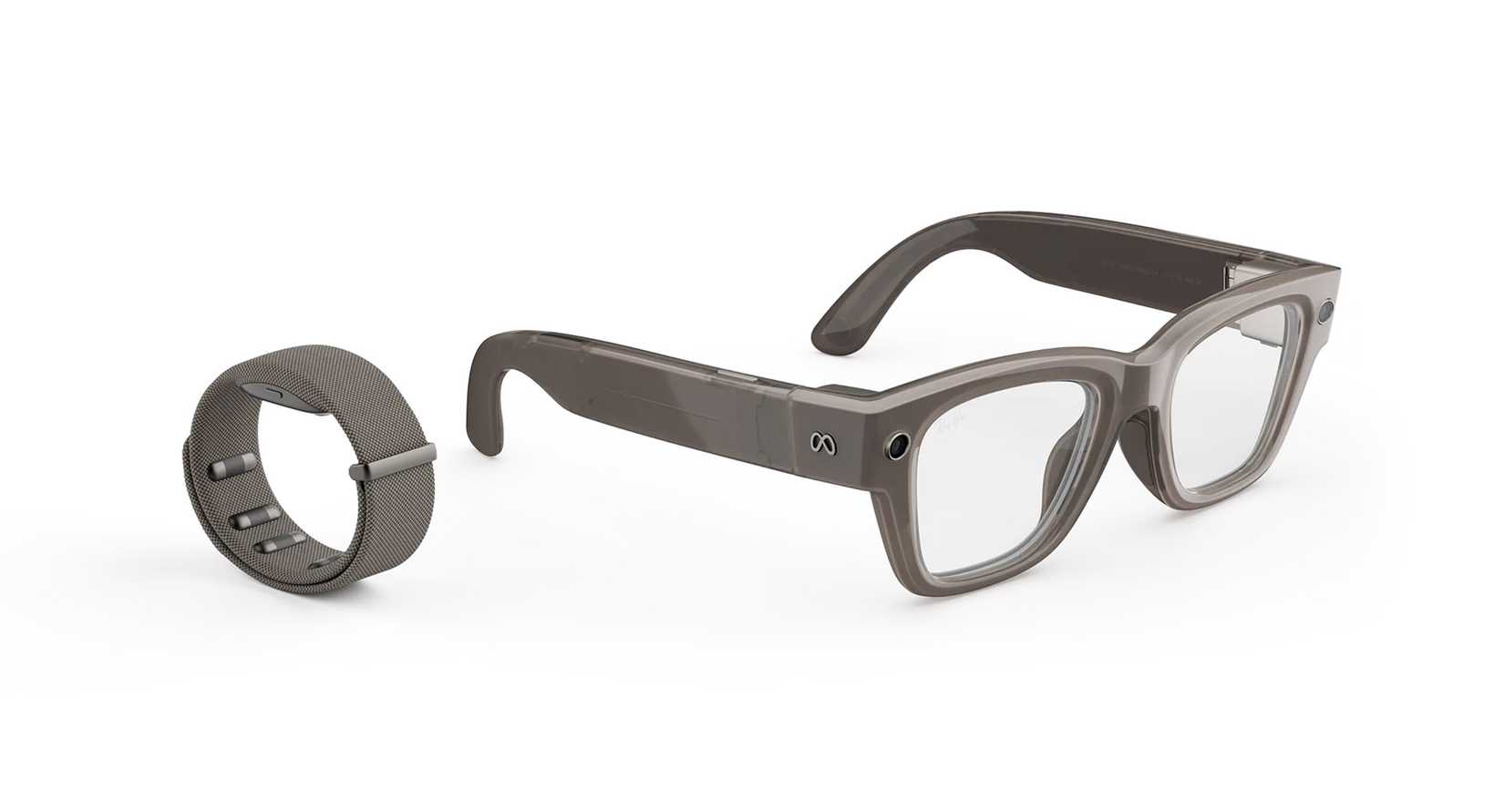The deeper that Meta CEO Mark Zuckerberg went into his demonstration of the Meta Ray-Ban Display smart glasses, the more I wanted them. On multiple occasions, the tech made me say, “Oh, that’s cool,” as I imagined using it in real life.
Unfortunately, the more I saw them on people’s faces, the less convinced I was that I’d ever wear them.
While smart glasses have improved a lot, and the tech inside the Meta Ray-Ban Displays is really exciting, the latest pair from Meta has put tech before design, a mistake I thought we’d moved past.
Truly exciting tech
Even with the demo problems
Merely fitting any kind of display into a pair of glasses and making the battery last more than five minutes is a huge achievement.
The neural interface wristband looks properly amazing, and given how incredibly accurate Apple’s Double Tap gesture is on the Apple Watch, I’ve no doubt it’ll be genuinely transformative after you’re used to it.
I love the way you can preview photos taken with the smart glasses using the display, and the conversation captioning is another crucial step forward to helping people with hearing loss navigate the world more naturally.
Just having notifications and GPS directions shown hands-free in front of my eyes is reason enough for me to want them.
The Meta Ray-Ban Display is exactly the type of exciting, futuristic tech I want to see, and the issues with the live demos made it appear far more honest than the polished, definitely-not-live presentations we’re used to these days.
I didn’t care that the video call demo didn’t work. It strangely added to the feeling that I was seeing something that wasn’t quite ready to exist, in that good way, which can’t help but excite a tech fan.
All the things left unsaid
Chunky monkeys
Are the Meta Ray-Ban Display smart glasses ready to exist? No, I don’t think so, but it’s not because of the tech or the dodgy demos.
It’s because of the shape and design, and I fear we’re going down a problematic path where, in the race to be first, Meta is ignoring that it hasn’t solved the problem of how to miniaturize all the new tech down into a product for everyone yet.
By doing so, there’s a risk of perpetuating the belief that all smart eyewear is badly proportioned and visually jarring.
Take a good look at the presentation, lifestyle images, and various hands-on videos, and ask yourself whether you could wear the Meta Ray-Ban Display glasses or not.
Zuckerberg and the gang didn’t go into size or weight, and it’s for a good reason.
To understand where things are going wrong, you need to pay attention to the thickness of the frames, the width of the arms, and the square units attached to the inner hinge.
Also note the percentage split between lens and frame, particularly when the lenses are clear.
These are big, chunky frames, and all their girth and thickness will only be amplified when you put them on your face.
These are going to make a serious statement. I say this as a committed Ray-Ban Meta wearer.
I’ve used them for more than a year, and remember clearly my optician said they had a “bold” look when we fitted them. What she meant was, they’re very obvious on my face.
Some people can pull off a bold frame, but very few will want to wear a heavy pair of glasses for very long. It’s when you dig into the specifications that you learn the sacrifice you’re going to make by wearing the Meta Ray-Ban Display.
They’re listed as weighing 70 grams, while my Ray-Ban Meta with prescription lenses weigh 50 grams, and my Mykita frames weigh 25 grams.
Add this to the 15mm additional hinge-to-hinge width over the Ray-Ban Meta, together with the thickness of the frames, and you’ve got a big pair of glasses.
No one wants to look weird
But you will
The Ray-Ban Meta smart glasses treads the line between a normal pair of glasses and a pair of smart glasses really well.
The enduring Wayfarer design suits most faces, and the compromises required to add in the battery, camera, and other tech haven’t dramatically affected the shape or weight.
Normal people can wear them, and most onlookers won’t think the glasses look strange or out of place.
I’m put off by the Meta Ray-Ban Display because it goes in the wrong direction. Not technically, but in design.
If smart glasses are going to see wide adoption — especially by those who aren’t forced to wear glasses every day to see — they can’t be too big, too heavy, or too weird-looking.
Simply, each new generation of smart glasses should get thinner, lighter, better looking, and more wearable before firms get too caught up in adding more tech.
Meta is running before it can walk, and it’s not the right decision for the future of this still young product category.
Smart eyewear needs to be eyewear first and wearable tech second if it’s going to appeal to everyone.
How has this happened? There’s an interesting, subliminal hint in the names of the two products showing where priorities lie.
Ray-Ban has its name first on the Ray-Ban Meta, but Meta is first on the Meta Ray-Ban Display. Design over tech for one, and tech over design for the other.
Adding weight and size will never convince regular people to wear smart glasses for very long, regardless of the tech they contain.
It took me a while to get used to the Ray-Ban Meta’s size, weight, and seeing the bold frames and arms in my peripheral vision.
Knowing the Meta Ray-Ban Display will be heavier, thicker, and bolder puts me — a Ray-Ban Meta devotee and life-long glasses wearer — off, and that’s a problem, because I am not sure people who don’t have to wear glasses will respond any differently.





